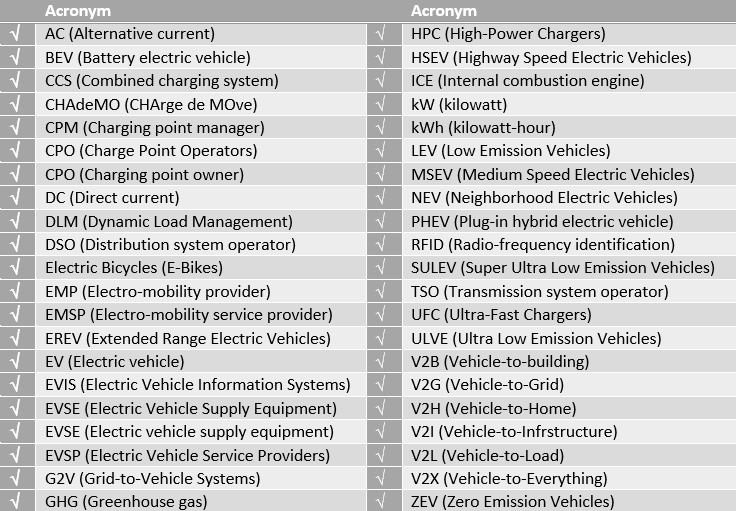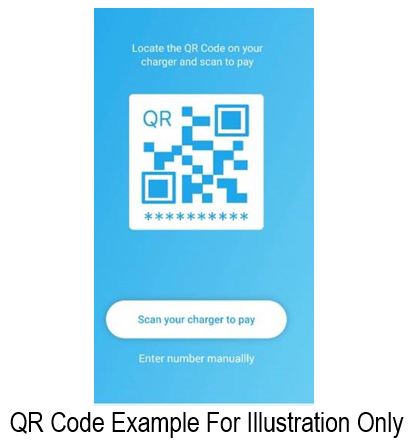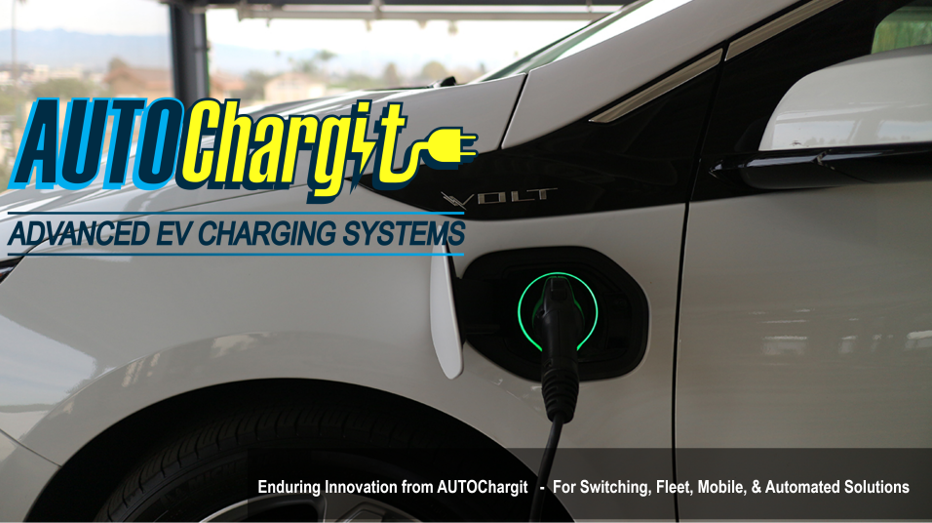Acronym Table –

AUTOChargit™ Port – AUTOChargit™equipment that contains the EV connector and cable along with the necessary user interface components to complete the electrical charging connectivity to an EV and complete the user’s registration with the AUTOChargit™ System. An AUTOChargit™ Port can be wall or bollard-mounted. The AUTOChargit™ Ports may be single, dual, or quad-mounted. Each port is wired and operated independently.
AUTOChargit™ Switching Charger – An AUTOChargit™ EV Charger does not have a user interface or Point of Sale hardware. It will be installed remotely from the individual parking stalls/charging ports. It is capable of switching power between 10 AUTOChargit™ Ports as directed by the MCP.
AUTOChargit™ Switching Solution – An interconnected autonomous electric vehicle supply equipment (EVSE) system that is comprised of a collection of AUTOChargit™Switching Chargers connected to a single MCP and MDC that distributes electrical power to a series of AUTOChargit™ Ports, to charge EVs based on a site-specific priority structure. Distributed power is metered per EV and automatically billed to the end-user via the AUTOChargit™ Mobile APP.
AUTOChargit™ System Mobile – An AUTOChargit System that is physically transferred from site to site and sources its power from mobile batteries. The batteries are recharged when not in use.
AUTOChargit™ Zone – A zone within the parking area, comprised of a single AUTOChargit™ Switching Charger with up to 10 AUTOChargit™ Ports. It also includes a Combo Disconnect so the entire zone can be remotely power-cycled and contains an Ethernet uplink to the MCP.
BMS – Battery Management System
BMS CC-CV Mode Switching – Max Current will be limited by onboard BMS. Constant Current(CC) is the fastest charging mode and Constant Voltage (CV) is used to protect the battery and reach the upper charge limit of the battery. The transition from CC to CV is decided per manufacturer per battery type. Some are close to 80% SoC while others can be as low as 40%. The total time to charge to 80% will be greatly influenced by the transition from CC to CV.
Vehicle QR Code – A QR Code that is assigned to a vehicle when a user adds or registers a new vehicle in there.
Vehicle QR Code Contains
- User ID
- Vehicle license plate number
Combo Disconnect – Siemens Combo Disconnects Part Number 17EUE92BS13. Each AUTOChargit™ Switching Charger has a single Combo Disconnect to allow for remote power cycling (disconnect and reconnect to the power source).
EV – Electric Vehicle
EV Charge Port – All equipment for a single stall. The EV Charge Port is connected to an EV Switch Panel
EV Switch Panel – A single control panel that connects a single EV Charger to up to 10 EV Charge Ports.
Local Stall ID – The unique information that details the location of the parking garage stall that includes the following attributes:
- Country
- State or Providence
- City or Municipality
- Street Address
- Zip Code or Postal Code
- Building Name [optional]
- Garage Level (could be a number or number with reference name or number with reference name and color)
- Garage Floor Area [optional if the Garage Level is subdivided e.g. EAST, WEST]
- Lane # [optional]
- Stall #
- AUTOChargit EV Zone #
- AUTOChargit Port # [1…10]
Port QR Code – A QR Code that contains the Local Stall ID and is displayed at each AUTOChargit EV Port.

MCP – AUTOChargit™ Main Control Panel hosting a Programmable Logic Controller (PLC) responsible for the overall operation of a single AUTOChargit™ System. MCPs have various capacity sizes.
SoC – State of charge (SoC) is the level of charge of an electric battery relative to its capacity.
For more information see www.AUTOChargit.com or contact Shawn Adams at:
sadams@dasherlawless.com
M 630.310.1902
For media requests, please contact Christina Cappello at:
ccappello@dasherlawless.com
O 818.989.1282

